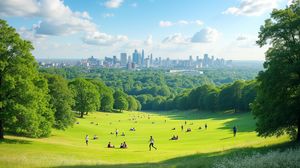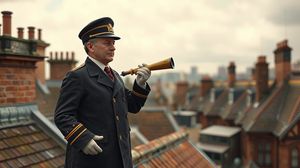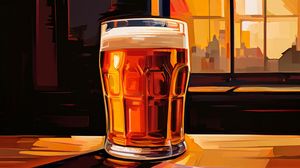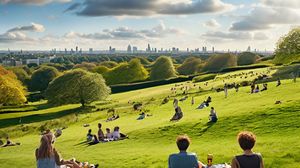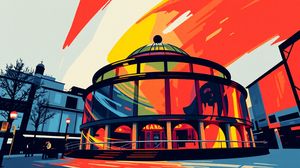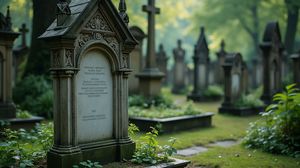
2 Willow Road is a fascinating modernist property located in the picturesque area of Hampstead in London. It was designed by the architect Ernő Goldfinger and built in the late 1930s as a pioneering example of modernist architecture in the UK. The house stands out for its minimalist aesthetic and innovative use of materials, distinguishing it from the traditional architecture that pervades Hampstead.
Inside 2 Willow Road, visitors can explore a thoughtfully curated selection of furniture and art pieces. These reflect Goldfinger's design philosophy and offer a rare glimpse into the lifestyle of a modernist architect. The interior has been preserved much as Goldfinger and his family left it, making it something of a time capsule of mid-20th-century aesthetics.
Apart from its architectural significance, 2 Willow Road also has an intriguing place in pop culture. It is often noted for its rumored connection to the famous villain Auric Goldfinger from the James Bond novels, as the character's creator, Ian Fleming, reportedly disliked Ernő Goldfinger enough to name a villain after him.
Despite the home's architectural acclaim, its construction was controversial at the time. Goldfinger's plans initially met with resistance from local residents, including writer Ian Fleming and other notable Hampstead figures who were not keen on its modernist style disrupting the area's classic charm.
2 Willow Road is a part of the National Trust, a testament to its national significance within England's architectural history. This offers visitors the chance to explore the house in guided tours, learning not only about the property itself but also the wider impact of modernist design in Britain.
Beyond its architecture, the house also serves as a gallery of sorts, housing works by leading artists of the time, including Marcel Duchamp and Henry Moore. This adds another layer to its appeal, creating an intersection of art, design, and history.

Making the Most of Your Visit:
Take your time to appreciate the design details: 2 Willow Road reflects Goldfinger's attention to both form and function, so make sure to pause and notice the intricate construction elements. Look out for how each part of the house is crafted to serve a particular purpose and think about how innovative these features would have been at the time.
Check out the artwork and personal collections: The house is as much about art as it is about architecture. Spend some time exploring the works by Duchamp, Moore, and other artists, which are thoughtfully placed throughout the home. These pieces greatly complement the modernist aesthetic and provide insight into Goldfinger's tastes.
Engage with the stories: Be sure to soak in the anecdotes about the family and guests who frequented the house. These stories bring to life the domestic setting and illuminate the intellectual interactions that took place within these walls, many involving prominent figures of the mid-20th century.
Notice the neighborhood contrast: After leaving 2 Willow Road, take a moment to observe the surrounding traditional Hampstead architecture. It gives a clear impression of the stark contrast between Goldfinger's modernist vision and the more conservative styles of the time, illustrating the controversial impact his designs had on the area.
Keep an eye out for hidden symbols: Throughout the property, there are subtle nods to Ernő Goldfinger's Communist beliefs and his professional rivalries. If you're a history buff or just enjoy a bit of mystery, these small allusions add an intriguing layer to your visit.

Visiting Times & Costs:
2 Willow Road is indeed open to the public, typically from March to October. It usually operates on specific days of the week, often Wednesday to Sunday, but it is advisable to check current opening days and times through the National Trust. The visits are generally conducted through guided tours.
Admission Fees:
- Members of the National Trust: Free
- Adults: Around £10
- Children: Free, but it's best to verify current policies as they can change
- Family Tickets and group discounts may be available.
Accessibility:
- Due to its historic nature, there are accessibility challenges. The property's layout includes several stairs and narrow passageways, making full access difficult for visitors with mobility issues.
- The National Trust often provides detailed accessibility information and may offer virtual tours, which could be a good alternative for those unable to physically explore the property.
2 Willow Road occasionally has events or exhibitions that may alter regular visiting hours, so verifying details before planning a visit is recommended.

Address & Map:

Nearby:



